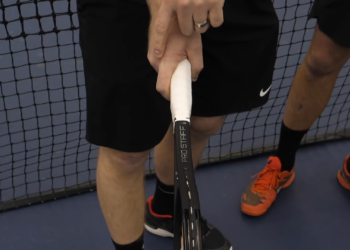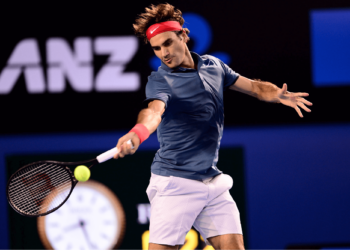World Cup Fever? I’ll be honest. I caught it. This “illness” even trumped my Wimbledon viewing the past two weeks. But I’m okay with it. After all, the World Cup only comes once every four years.
I am one of the growing number of Americans who love soccer—almost as much as I love tennis. It’s an exciting, fast-paced game that involves two 45-minute halves of non-stop action. What other sport isn’t interrupted by commercial breaks every few minutes? Soccer players are quick, skillful, and incredibly athletic. There’s a reason why everyone around the world calls it “the beautiful game”.
Don’t believe me that soccer and tennis have a lot in common? Let me explain.
(First a quick note on terminology: my fiancé is from Ireland and he shudders when he hears the “s” word. I’ll go as far as to say it’s a swearword in our house. Since we, the US, are in our infant years as a football nation and trying to gain respect worldwide, I will attempt to use the correct terminology, henceforth replacing soccer with football, at least in the rest of this post!)
Back to why I think football and tennis are alike.
Both require a high level of individual athleticism – athletes from each need to be able to create short, explosive bursts of energy and be able to quickly change direction, all while having to conduct skillful actions while moving at such high speeds.
When I was teaching junior tennis regularly I often had parents ask me what other sports they should get their child involved in. I always recommended football. They complement each other nicely, building endurance, strength and skills that make for a better all-around athlete. (As I can attest from my own days of playing both sports in high school.)
Both games require long periods of intense concentration, and both can change in an instant – My brother was a nationally ranked snowboarder and I always thought it was tough to have a year’s worth of hard work and effort go into a run that lasts less than 30 seconds. But when you think about it, that same intense concentration for a 30 second run needs to be present for the entire 90 minutes of a football match, or for several hours in tennis. And then, a moment’s lapse or score by a player can completely shift the momentum of the game – and there have been many examples in recent tennis tournaments and World Cup matches.
They are both considered elitist sports (in America, at least) – Tennis is unfairly dubbed by many as an upper class, country club sport. It doesn’t help that the game holds on dearly (with white knuckles) to dated traditions like wearing all white at The All England Club for Wimbledon, and at many private clubs nationwide.
The United States Tennis Association (USTA), the nonprofit that basically runs all tennis in the US, has made huge strides in recent years to increase engagement and make the cost cheaper. For example, they introduced 10 & Under Tennis, which smartly uses proper size equipment so kids will succeed quicker, in turn increasing the retention rates.
Football has had its own stigmas. All too often in the US, the word “soccer” is followed by “mom”. We think of a suburban mom carting around a SUV filled with kids, slices of oranges always within arm’s reach. This is one of my theories as to why football hasn’t caught on in the US like everywhere else in the world; people think it’s a middle-class game that is reserved for lush, green areas outside of cities.
Ironically, the rest of the world considers football a “poor” and working class sport. Anyone from anywhere can find some open space, something round, and makeshift goalposts to play the game. In the most humble of areas in remote places of the world, football is held in high regard and, in some places, it’s almost a religion.
If we could produce more home grown talent, the sport would be more popular – There wasn’t a single American tennis player to reach the last 16 in this year’s Wimbledon’s singles draws. The first time in 103 years! When you see a country like the Czech Republic with a population around 10 million produce so many star tennis players, you’d think that a country of over 300 million people would have no problem being a dominant force on the tennis tour—and the football pitch. Are we not hungry enough? Do we not want to put in the blood, sweat, and tears to get to the top? Don’t get me wrong. I’m not saying we need to be the best in the world, but I think we should see more American flags next to the names creeping through the draws. We’re all craving a resurgence of the Agassi and Sampras days to help grow the sport here.
As a football supporter for years now, this World Cup has been so exciting to watch. The buzz and energy amongst everyone—even those I’d consider non-supporters of the sport—is palpable. Now that Team USA is out, the interest will dwindle a bit, but I have a feeling (and high hopes) that we’ll look back at this World Cup as the turning point.
More networks will show football matches, sponsorships will increase, Major League Soccer (MLS) will get more fans, and more boys and girls will start pretending to be a goalie like Tim Howard or a striker like Clint Dempsey.
On one hand we’re looking for a rebirth of tennis in the US, on the other, we’re starting to blossom as a footballing nation. If we can produce some world-class stars, then our youth will be compelled to choose either or both of these amazing sports.
What else does tennis and football have in common? What do you think it will take for both to be a bigger force in the US?



